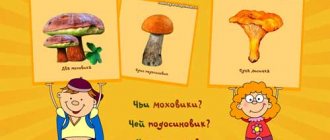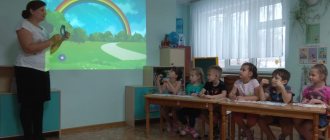With the onset of autumn, the number of warm sunny days gradually decreases. The sky becomes overcast and it rains more and more often. Plants and animals are preparing for the cold. The weather becomes changeable and changes its colors. In lessons on the surrounding world in 2nd grade, observations of autumn help children understand what changes occur in nature at this time of year.
What happens to plants
The weather is changeable, but you can observe a colorful natural phenomenon - leaf fall. In autumn, plants shed their leaves. This process is useful for them, since the foliage helps the vegetation get rid of harmful insects. But a certain number of larvae still remain under the bark.
Shrubs and grasses shed their leaves. This is due to the fact that in autumn the amount of harmful substances in it increases. By shedding leaves, plants get rid of them. Useful components are stored in the roots and tubers of the bulbs. Valuable substances become necessary in the warm season.
In autumn, plants prepare for winter. After a period of dormancy, they tolerate the growing season better. Grasses, trees and shrubs do not stop developing, but their metabolism slows down. In late autumn, the makings of vegetative buds appear, which bloom in the spring.
Plants require moisture and sunlight for photosynthesis. When there is a shortage, biological changes occur at the cellular level: vital processes stop or slow down.
In autumn there are temperature fluctuations. Due to the reduction in daylight hours, the movement of fluid in plants slows down. The sun does not fully warm the earth, the soil dries out. The life cycles of trees and shrubs are completed. In winter, plants have a dormant period, which is associated with a lack of moisture and nutrients.
One of the main signs of autumn is the change in leaf color. They turn yellow, golden, red-orange, and soon fall off. Students are encouraged to make a list of trees that shed their leaves first, these are:
- birch;
- maple;
- Linden;
- oak;
- ash;
- poplar;
- aspen.
Plants lose leaves because they are deficient in chlorophyll, a green pigment that is involved in photosynthesis. The foliage decomposes on the soil surface, saturating it with organic matter. The resulting layer is able to retain rainwater, it saturates the soil with moisture. In such a substrate, crops grow and develop better, and in cold weather their roots are protected from freezing.
Autumn is a time of beautiful landscapes. You can see how all nature is preparing for winter. In a scientific diary for grade 2 on the surrounding world, it is necessary to indicate that in the fall both solid and liquid precipitation are observed. The climate changes sharply, at the end of November fogs appear and frost forms on the plants.
At this time, the winds blow, the clouds fill with rain. Many people associate autumn with mud, slush, and chilly winds. At the end of November, snow dew appears early in the morning.
What are the autumn changes in inanimate nature?
No less important changes occur in inanimate nature. Already in September–October you can observe:
- decrease in air temperature;
- reducing daylight hours;
- characteristic natural phenomena - rain, fog, frost, frost, first snow and freezing.
Shorter daylight hours, lower air temperature
As you know from physics courses, our planet revolves around the Sun and makes a full circle in a year. During rotation, the Northern Hemisphere of the Earth is tilted towards the Sun for several months (summer). Over the next few months it deviates from it (winter). At this time, there is a decrease in the day and an increase in the night.
In autumn, the sun does not rise above the horizon as high as in summer. The days are getting shorter and there is less sunlight. In mid-September to early October, a short period of warming begins, which is popularly called Indian summer. It usually ends in mid-October.
The cooling that comes as a result of a decrease in sunlight and heat affects all living nature, since the decrease in sunlight is directly related to the cooling. According to Tom Jackson, author of Hacking Planet Earth, the Earth's atmosphere is in constant motion. This affects the diversity of meteorological conditions in different geographical locations. This continuously changing state is called weather.
Weather phenomena in autumn
The following natural phenomena are most characteristic of autumn:
- Unexpected frosts. They occur when two factors combine: damp soil and a sudden change in weather. In the book “Secret Signs of Nature. How to become a weather detective and read signs” Peter Wohlleben warns: unexpected frosts pose a real threat to plants and all living things.
- Fog. This is a thick cloud consisting of microparticles of moisture. It is formed as a result of a temperature difference near the soil surface.
Fog in Autumn: Pexels
- Frost. It consists of small particles of dew frozen in the form of snowflakes. Frost covers all surfaces with a thin, prickly layer. Its appearance indicates sub-zero temperature.
- Wind and rain. In autumn, an atmospheric front brings cold air masses. The wind changes direction, intensifies, causing precipitation and bad weather.
- Ice drift. When the air temperature drops to negative values in autumn, the surface of reservoirs with weak or no current becomes covered with crusts of ice. Immature ice under the influence of wind forms the so-called autumn ice drift.
- Ice. When it's frosty outside, rainfall on the surface of roads and fields turns into an ice crust. This phenomenon is often observed in mid and late autumn.
Autumn is an incredible time when the surrounding nature changes dramatically. Continuous changes occur in living and inanimate nature. The transition from the warm days of late summer to the first snow and frosts of winter occurs gradually during the fall.
Original article: https://www.nur.kz/family/school/1816103-cto-takoe-osen-vaznye-sezonnye-izmenenia-v-organizme-celoveka/
Activities at this time of year
Summer residents collect apples, grapes, tomatoes, corn, pumpkins, potatoes, and carrots. Products are put into storage. When Indian summer arrives, gardeners prune trees and shrubs and also treat them against harmful insects. The soil is dug up and organic matter is added. In September-October, winter crops are planted and perennial plants are insulated.
Upon completion of agricultural work, a harvest festival is held. The gifts of autumn are laid out on the counters: fruits, vegetables, berries. Changes in nature that occur in autumn fill a person with positive emotions. Rain followed by sunshine is inspiring. Autumn is filled with romance. Marriages are often celebrated at this time of year.
card file “Observing the weather in autumn” card file on the world around us (senior group)
№ 60Snow and Ice Observation
The goal is to consolidate knowledge about the various states of water; develop a realistic understanding of inanimate nature.
Conversation
What is ice made of? What properties of ice (snow) are you familiar with? How
Do snowflakes form?
We are snowflakes!
This is us - the parachutes of winter.
We are circling above you,
We are friends with the winds.
Ice is frozen solid water; you just need to warm up a piece of ice in your palm, and it will
It immediately flows from your fingers in a thin stream. Signs of ice: shine, smoothness, hardness, fragility. Pat the surface to determine smoothness. Impact to detect strength and fragility. Water evaporates from the seas and oceans. Water vapor rises high above the ground, where it is always very cold. There, at altitude, the steam freezes into tiny ice crystals. The crystals join together to form stars-snowflakes.
What is snow like in warm weather? (Sticky, heavy, wet, damp.)
What is snow like in frosty weather? (Dry, fluffy, light, crumbles.)
Dense, trampled snow melts more slowly than loose snow; dark dirty snow melts before clean and light snow.
Research activities
Compare the freezing time of clean and colored water in large and small molds. Compare the rate of melting of snow placed in
the glass is tight or loose.
Finger gymnastics “Ice”
№ 62
Watching insects
The goal is to introduce the most common insects, their lifestyle, and living conditions.
Conversation The whole field near the outskirts -
Large blacksmith shop.
This is where the work goes so smoothly -
Everyone's ears are ringing!
Consider how beetles crawl, some of them fly. Pay attention to the long mustaches of longhorned beetles. Show ladybug she
crawls along the hand, spreads its wings, flies away to look for food.
Examine the butterfly, how it flutters, how it folds its wings, how it sits
on a flower, crawling on it. Examine the anthill. What does it consist of? Twigs, bark, lumps of soil - all this was brought in by small
workers are ants. Small holes are passages. The ants are constantly scurrying about, and each one is carrying something. Ants are friendly guys. They never quarrel and take care of each other. Ants don't hurt anyone.
For this, everyone respects them - both in the forest and in the field. Nobody touches them. And we don't
If we disturb them, let them work. With children, watch how bees examine a flower and climb deep inside for nectar. Talk about the benefits brought by bees: during the summer they pollinate a huge number of flowers. Ask what insects eat and who eats them.
What are the benefits and harms of them? What do insects need to live?
Finger gymnastics “Beehive”

